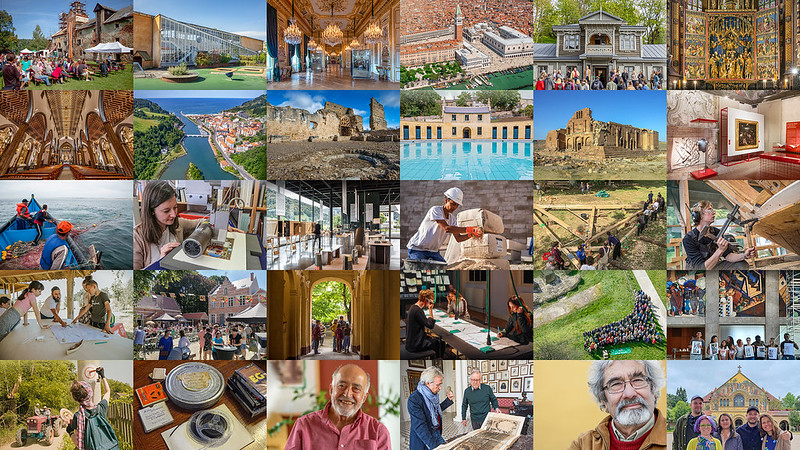
The European Commission and Europa Nostra announced on 13 June the 30 winners of the European Heritage Awards 2023. The Awards, funded by the Creative Europe programme of the European Union, are granted in five categories: Conservation & Adaptive Reuse, Research, Education, Training & Skills, Citizens’ Engagement & Awareness-raising, and Heritage Champions.
Heritage supporters and enthusiasts are now encouraged to discover the winners and vote online to decide who will win the Public Choice Award 2023, entitled to receive a monetary award of €10,000.
The European Heritage Awards Ceremony will take place on 28 September in the Palazzo del Cinema in Venice, as part of the European Cultural Heritage Summit 2023.
1. Mudéjar Ceilings of the Cathedral of Funchal (Portugal)
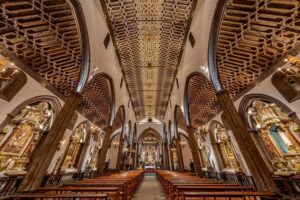
Mudéjar Ceilings of the Cathedral of Funchal, Madeira, PORTUGAL © Secretaria Regional de Turismo e Cultura /Direção Regional da Cultura (Madeira)/ Ricardo Faria Paulino
The Cathedral of Funchal is a majestic building on the island of Madeira, which treasures a unique architectural and decorative feature: its Mudejar wooden ceilings, which cover an area of 1,500 m2.
The work to restore the ceilings involved consolidating the supporting wood beams, cleaning the surface polychrome and gilding, filling gaps in the chromatic layer, and achieving chromatic integration, all while using components compatible with the original materials.
The restoration was carried out in partnership with the Diocese of Funchal, the José de Figueiredo Laboratory and the HERCULES Laboratory of the University of Évora; and financed by FEDER Madeira.
More information: https://www.europeanheritageawards.eu/winners/mudejar-ceilings-of-the-cathedral-of-funchal/
2. Wit Stwosz Altarpiece in St. Mary’s Basilica in Krakow (Poland)
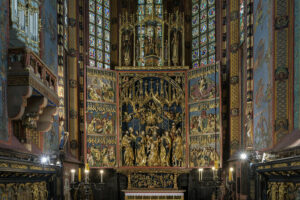
Wit Stwosz Altarpiece in St Mary’s Basilica, Kraków, POLAND © Paweł Gąsior
The Gothic altarpiece of St. Mary’s Basilica in Krakow was carved by Wit Stwosz (Veit Stoss) between 1477 and 1489 and consists of 200 carved figures inspired by medieval residents of the city.
In 2012, the condition of the altarpiece was examined, concluding that it was stable but threatened. In 2015 the conservation work started, performed by the experts from the Academy of Fine Arts in Kraków.
More information: https://www.europeanheritageawards.eu/winners/wit-stwosz-altarpiece-in-st-mary-basilica/
3. Ruins of the Monastery of San Pedro de Eslonza (Spain)
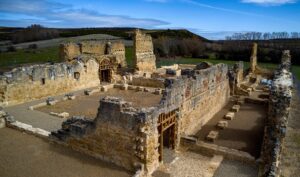
Ruins of the Monastery of San Pedro de Eslonza, Gradefes, SPAIN © Susana Valbuena Rodríguez
The Monastery of San Pedro de Eslonza was founded in the 16th century by Benedictine monks. By 1835, the complex had fallen into disrepair. In 1931, it was declared a national monument, although some parts had already been dismantled and plundered.
The monastery has recently undergone an intervention that included archaeological investigation, consolidation and rehabilitation for tourist visits. In order to make it safe for visitors, the project included the restoration of the monastery’s original layout, consolidation of the walls, installation of timber supports in archways, restoration of the original floor level with gravel for better circulation and the erection of signposting that respects the monument.
The intervention was guided by a focus on technical, economic and social sustainability, which has led it to be awarded as an example of a rehabilitation and adaptive use project.
More information: https://www.europeanheritageawards.eu/winners/ruins-of-the-monastery-of-san-pedro-de-eslonza/
4. Carpenters without Borders (France)
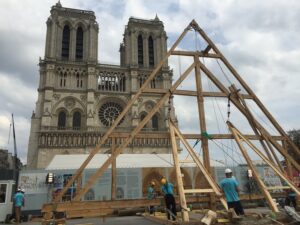
Carpenters without Borders, Paris, FRANCE © François Calame Charpentiers sans Frontières
Carpenters without Borders is a French organisation created in 1992 and composed of carpentry professionals willing to contribute their skills to heritage projects. Over three decades, Carpenters Without Borders has made a name for itself by contributing to the study, conservation and development of traditional restoration techniques.
One of his greatest achievements to date has been his proposal for the reconstruction of the burnt framework of Notre-Dame Cathedral using materials and techniques reminiscent of the 13th century, which has been used as a reference point in the restoration of the cathedral.
More information: https://www.europeanheritageawards.eu/winners/carpenters-without-borders/
5. Village Square Meer (Belgium)
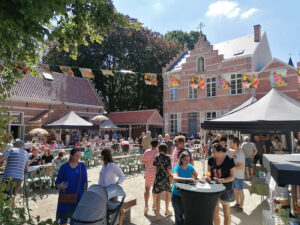
Village Square Meer, Antwerp, BELGIUM ©VZW Klooster Meer
Village Square Meer is a remarkable citizens’ initiative which has breathed new life into a historic convent, situated in the heart of Meer, a small village in the province of Antwerp. Built in the 19th century, the Meer Convent has been an important public space. The cloister and its surrounding buildings were listed as a National Monument and Landscape in 2003.
After the closure of the village school and the parish hall in 2005, the convent was put up for sale. It was then that a group of Meer residents initiated a movement, quickly supported by local entrepreneurs and public administrations, to study alternatives that would guarantee the public use of the convent and its preservation.
Finally, the convent and the surrounding area have been revitalised through the creation of a public space that combines historic and contemporary architecture and integrates public functions and new social housing.
More information: https://www.europeanheritageawards.eu/winners/village-square-meer/
6. Cláudio Torres and the Islamic heritage in Portugal
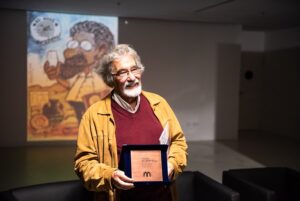
Cláudio Torres, PORTUGAL. © Campo Arqueológico de Mértola Archive.
For over 40 years, the archaeologist Cláudio Torres and the research centre that he created in Mértola have played a pivotal role in fostering the appreciation and conservation of Islamic heritage in Portugal.
Mértola had been an important city in Antiquity and the Middle Ages. Excavations initiated by Cláudio Torres in 1978 uncovered a wealth of discoveries: a necropolis from the Late Middle Ages, an intricate Islamic district, an impressive Paleo-Christian religious compound, two 6th-century baptisteries and mosaics with Byzantine influences.
This has reshaped the understanding of the site for the contemporary world and has led to numerous research projects, books and museum exhibitions.
More information: https://www.europeanheritageawards.eu/winners/claudio-torres/





Follow us: